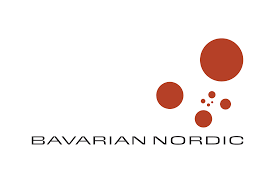Pricey salon curl? – only her hairstylist knew for sure! Carmen Curlers were a baby of the plastic-fantastic 1960s, enabling busy working women and housewives alike to achieve salon-quality curly tresses in just ten minutes.
With the help of a dreamy advertising campaign (“Become a new woman in 10 minutes!”), the electric curling sets sold like hotcakes from shelves in this country and abroad, becoming the tools-of-the-trade of every fashion-conscious lady of the times.
So where did Carmen Curlers come from – and where on earth did they go?
Unlikely beginnings in Jyderup
It’s hard to imagine how women slept before the advent of home hot rollers – quite literally. Women were known to suffer many sleepless nights with a head-full of plastic curlers – or even orange-juice cans – before the brilliant idea of a hotter, faster curler came about.
Although thermal hair curlers date back as far as 1930 (the innovation was formally credited to an African-American inventor, Solomon Harper), it took the mid-20th century age of home convenience and an unlikely man from Jyderup in Zealand to make hot curlers a staple of every woman’s toilette.
Arne Bybjerg Pedersen was a former radio-dealer from Jyderup, who pulled up stakes and started a factory in Kalundborg in 1964. His aim: to produce electric hair curlers. His market: the housewife with no means for a salon ‘do’, and the working woman with no time. Carmen Curlers were born.
Kurly Kalunborg klondike
Bybjerg Pedersen employed plenty of women in the Carmen Curlers factory – an overwhelming majority of the 3,500-strong workforce were female. Orders rolled in from all over Europe and the US. By the time of the factory’s peak-production year, 1969, Bybjerg Pedersen had decided to sell out when Miss Clairol came knocking. Clairol made the radio-dealer from Jyderup an offer he couldn’t refuse: 250,000 kroner and a powerful, albeit campy name, Carmen Clairol.
Clairol also brought the company an aggressive, jet-set marketing strategy. By the 1970s, the firm had introduced a brand new product to the Carmen line. ‘Swingsetters’ were a junior-sized version of the original Carmen Curlers, intended for travel-use and ’emergency help at the office’.
The official spokesman for Carmen Swingsetters was Europe’s top hairdresser, the mono-monikered ‘Angart’. While Angart traipsed around Europe with Swingsetters and a bevy of hair models demonstrating 10-minute magic, Carmen Clairol flew in fashion editors from around the globe to see the curlers spring to life at the Kalundborg factory.
Permanent wave killed the curler star
But the 1980s would take its toll on Carmen Curlers’ rising star. The popularity of the ’80s permanent wave, as well as the more streamlined curling-iron, took a bite out of Carmen Clairol’s profits.
In 1990, the US-owned company closed down the Kalundborg factory and cut costs by moving production to Asia. The layoffs were devastating to the region. Throughout the 1990s, Kalundborg County bankrolled the sharp increase in the number of premature pensioners, plagued by back and arm problems caused by the drudgery of daily factory labour. The unemployment rate for women in the area remains high to this day, with many of the factory’s female workforce unable to find work elsewhere.
A song for Carmen
Sadly, there’s no such product as a Carmen Curler today. Clairol sold the patent, and its interest in the business venture, to the Remington company in 1993. The ‘Smart Setter’, ‘Care Setter’ and ‘Express Roller’, hot in just 90 seconds, are all godchildren of the original Kalundborg classic. But the name continues to ride the wave of household familiarity in this country. As Horsens appliance-dealer Birthe Jensen told Politiken’s ‘Where Are They Now?’ column several years back, even after the turn of the millennium, customers still ask for Carmen Curlers by name.
“Many women have discovered that the hairstyle holds longer if, instead of a turn with the curling-iron, they start the day with five hot curlers in the hair. It still takes just ten minutes – and so you can drink your morning coffee while you do it,” Jensen said.
A search for ‘Carmen Curlers’ on the internet reveals that they are still a national treasure of sorts – it’s the name of a world-renowned gay and lesbian choral group based in Copenhagen for over 25 years.















